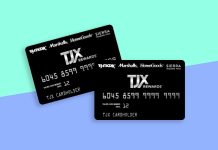
Your business’s brand identity is an integral part of your long-term success. Having a strong and memorable identity is crucial for a business to differentiate itself from the competition. It also plays a key role in getting and keeping customers. But creating a brand identity for your company that doesn’t get lost in all the noise can be challenging. With that said, the first step is understanding the distinction between a brand and a brand identity.
Your brand is the core of your business. It’s your message, your values, and how you operate, from the way to do business to how you view customer service. More than that, your brand is what your customers think about the aforementioned. Are you known for having excellent customer service? This would be a pillar of your brand. You mold your brand by how you run your business, what kind of products or services you offer, and how you treat your customers.
Your brand identity, on the other hand, is a visual representation of your brand. Good brand identity takes everything about your brand and seeks to communicate that through imagery, typography, tone of voice, and any other medium or material that would reflect the identity of your business. It seeks to create cohesion between the values of your company and the way you present those values.
Taking all this into account, it probably seems like creating brand identity for your business would be challenging. And it’s certainly not easy, but it’s not impossible, either. Here are two ways you can create a unique and memorable brand identity.
Know Your Business
It’s likely that when you started your business, you were doing lots of research. Creating a brand identity is the same. It starts with plenty of research. But this research will be a little different: You’re going to be taking a very careful look at your business.
First and foremost, if you haven’t already done so, you’ll want to clarify what your mission is. You know what you offer, but you need to be clear on the purpose of your business. Be direct and certain about what your vision is for your business and what your goals are. Once you have this, you have the core of your business’s personality.
With the core personality of your business in place, it’s time to start thinking about how you want to present that personality to the world. Think about the personalities of other businesses. Some are wholesome and professional. Others are spicy and sassy. How would you describe your business’s personality? Understand how your brand is perceived and assign adjectives to that understanding. This is the basis of your brand’s identity.
Create Relevant Visuals
With a thorough understanding of your own business and its personality, it’s time to start building the visuals of your brand. The centerpiece of these visuals will be your logo. Your logo should be a manifest symbol representing everything about your company. It should reflect your mission statement and your personality. The font you use and the colors you decide on should be a reflection of your company’s values and personality. Spend some time on your logo as this will be the starting point for the visual aspects of your entire brand identity.
Once your logo is in place, you can start building out the rest of your visual identity. During this phase, refer back to your mission statement frequently. Research imagery and colors that reflect your values. Say, for example, your company sells organic coffee. For shapes and fonts, you’ll probably want to look at things that are more organic and flowing and not very rigid. For colors, brown would be an obvious choice: Coffee is, itself, brown, and the color can also conjure images of earthiness. Picking the right colors, fonts, and shapes are going to play a key role in how your brand is perceived across everything you do and produce.
Branding and crafting a unique and compelling brand identity can be one of the hardest challenges in creating a business. But if you take the tie to fully understand your company and create compelling visuals to communicate this, you’ll see much more success.








